I've previously looked at the boiler and engine rooms aboard Iowa, and it's now time to take a look at the third space, the aft auxiliary machinery room. I've only been down there once about two years ago, so this probably won't be as clear as the earlier posts.
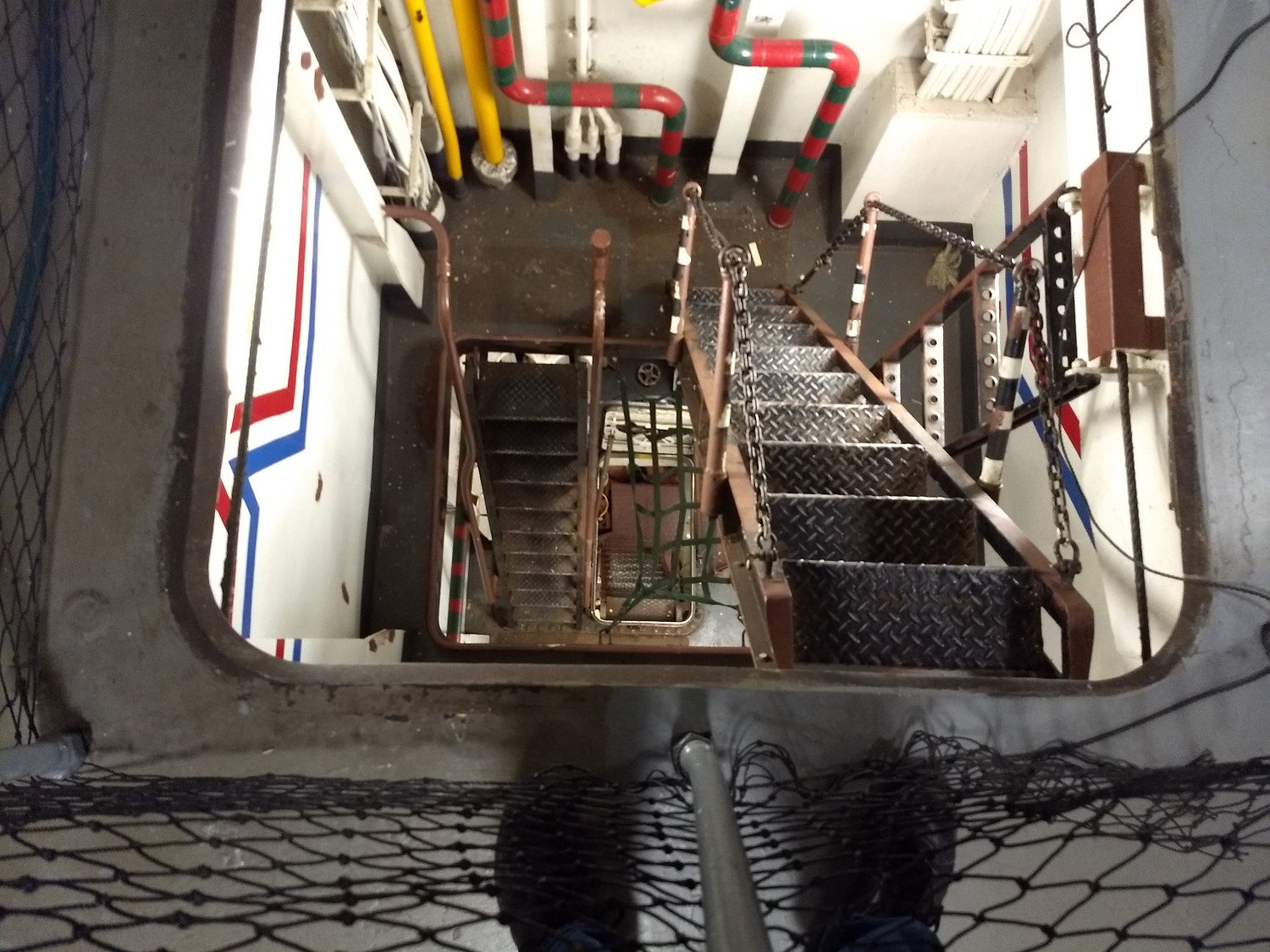
Getting down to the auxiliary machinery room requires going down a very steep shaft
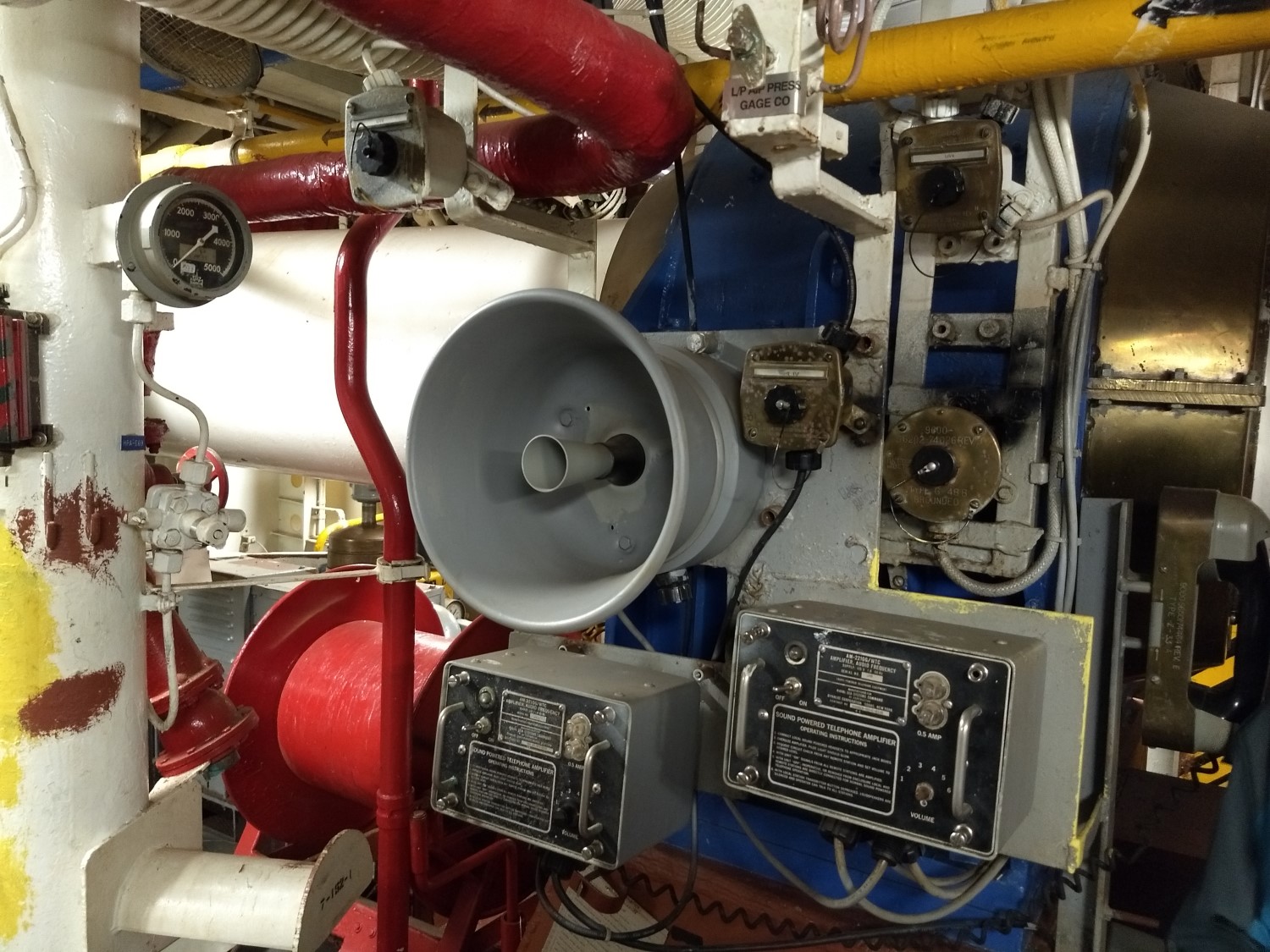
A speaker station in the AMR
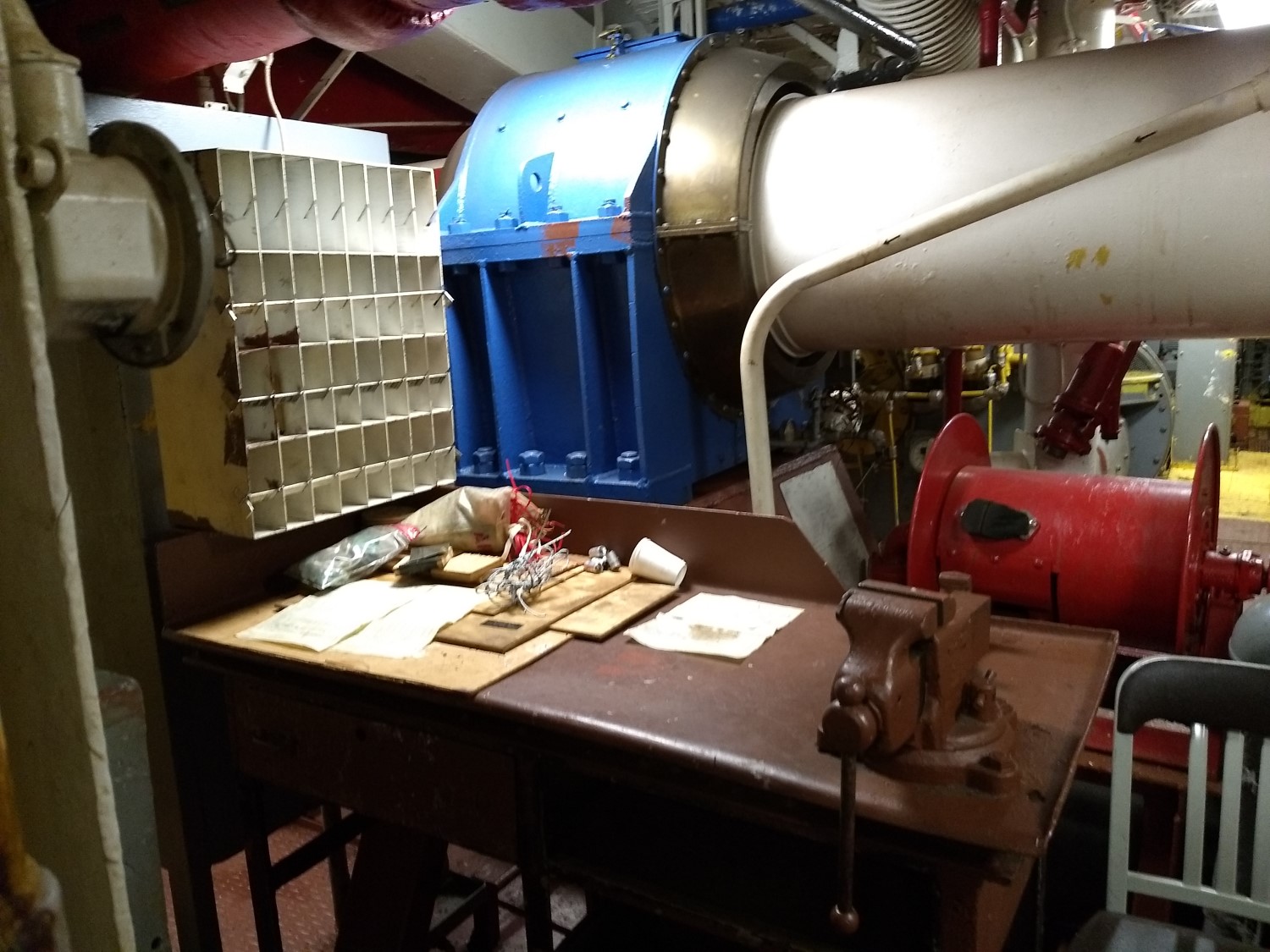
Shafts from the engine rooms forward of the AMR run through the room, past the areas the crew would need to work
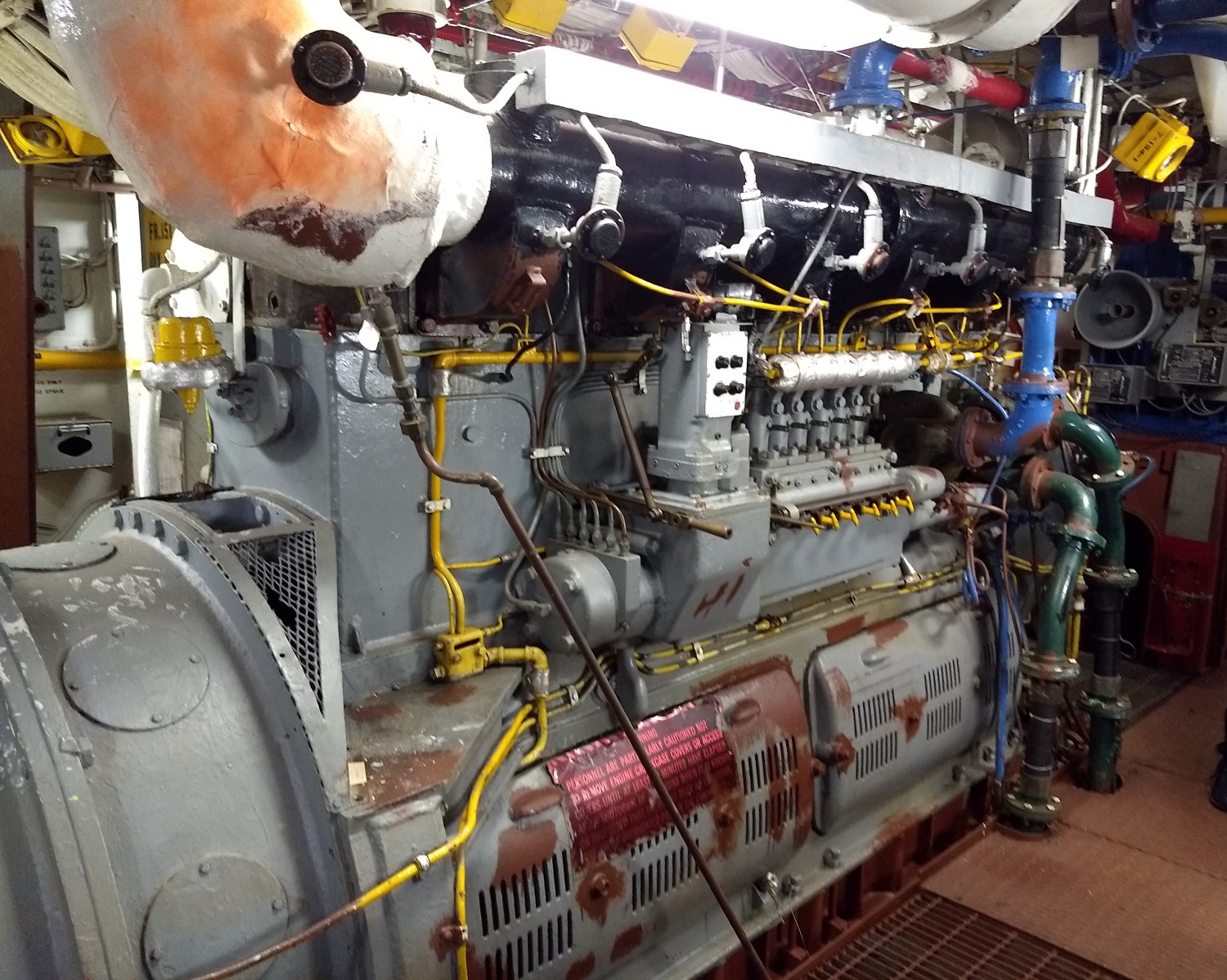
One of the most notable things in the room is the emergency diesel generator
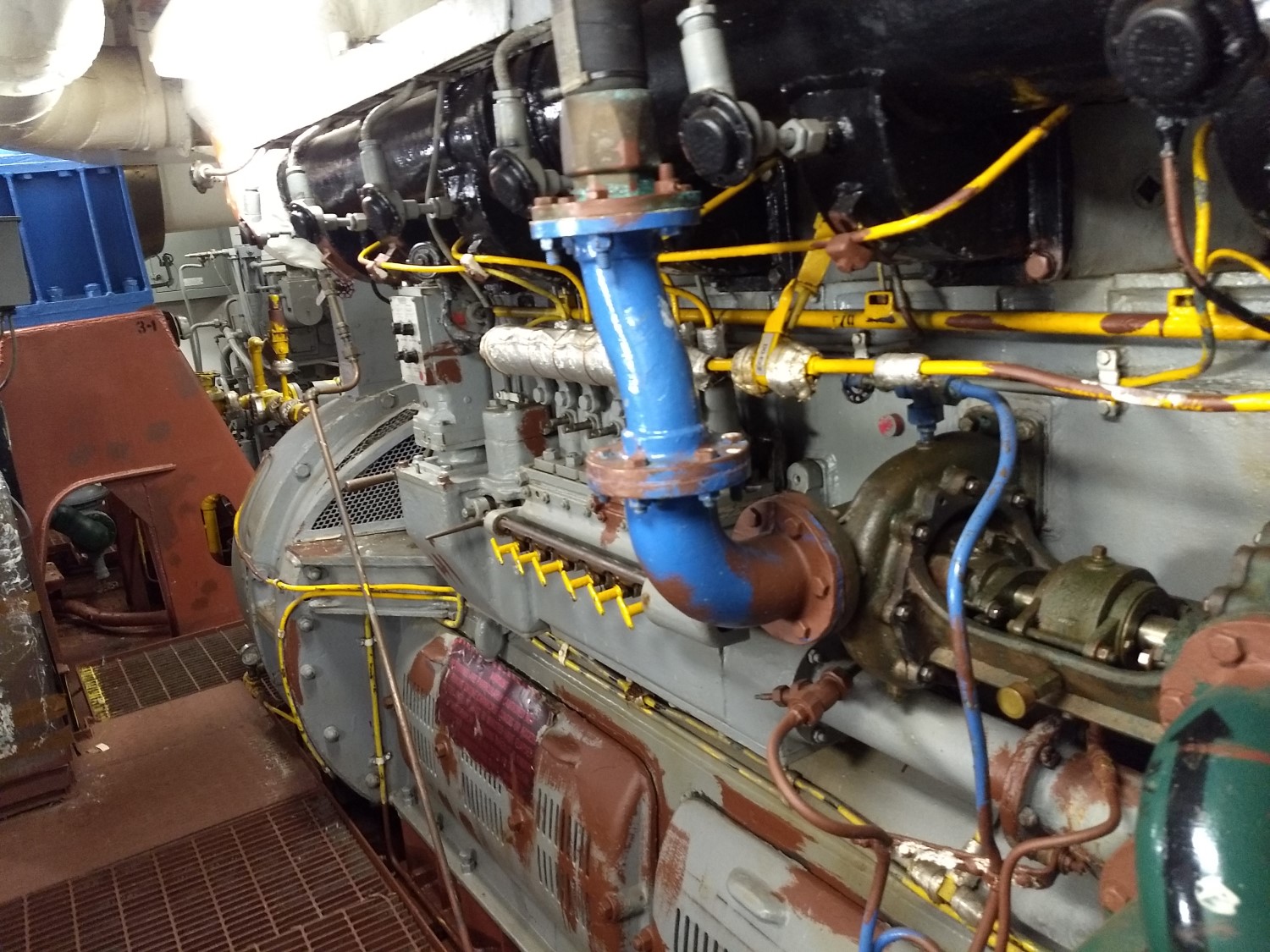
The generator is capable of producing 250 kW of AC power, and 5.5 kW of DC power

There are a number of control panels in the room, this one behind the diesel
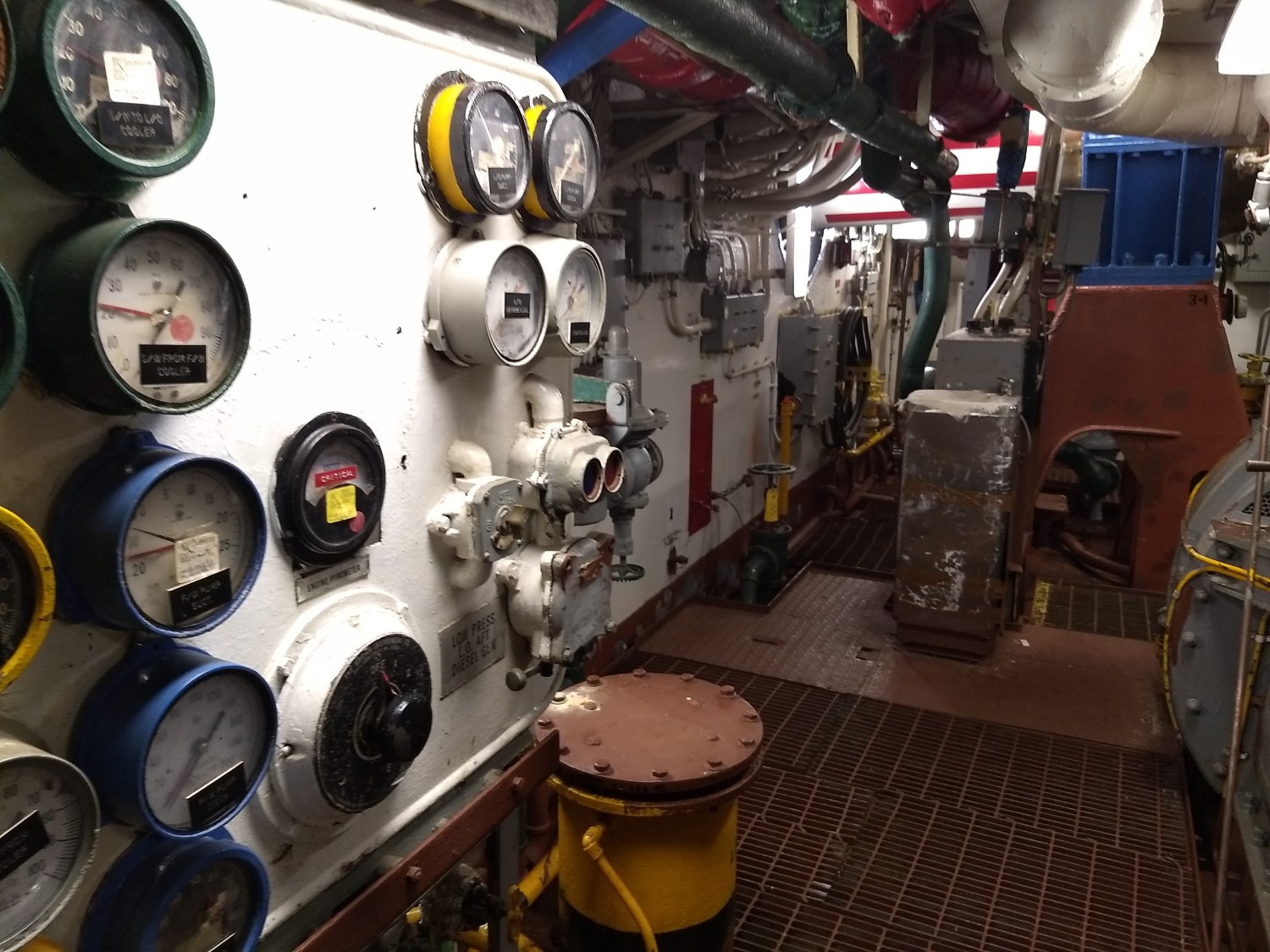
Note the stripes on the shaft in the background, to give a visual indication of rotation
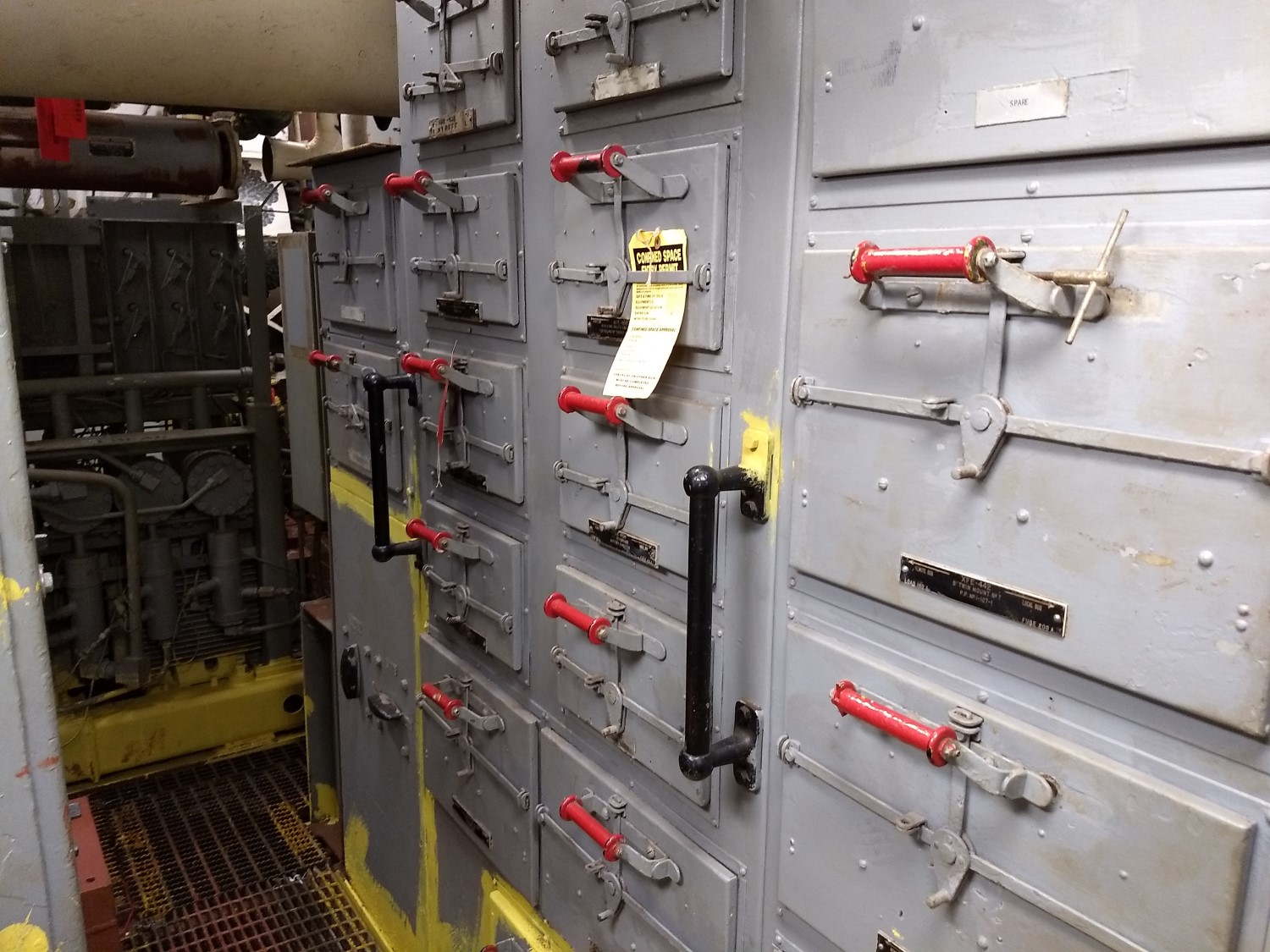
This panel is hooked up to the electrical system for emergency power
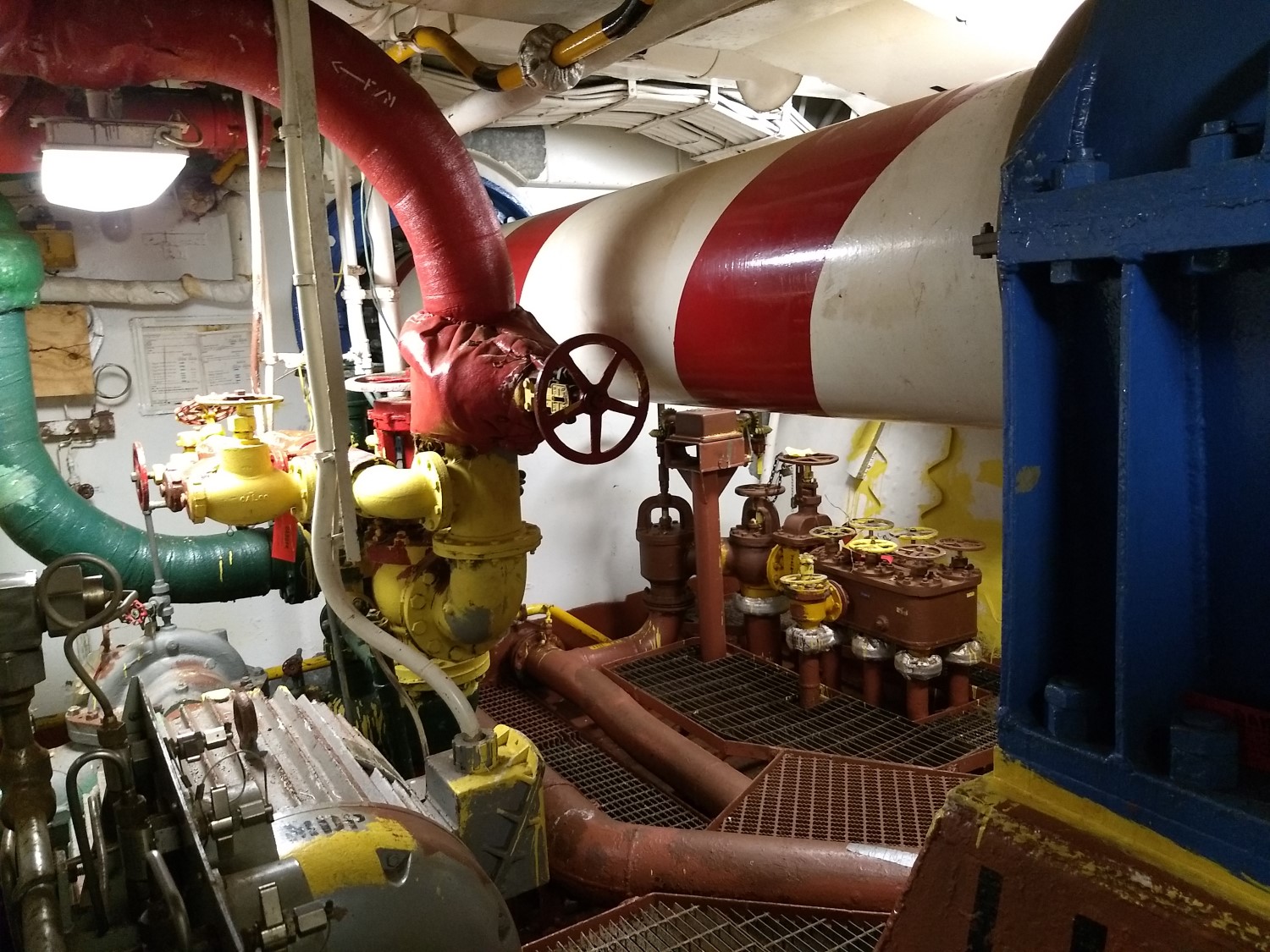
The room is also full of piping. Green is salt water, red is fire main, and yellow is either lubricating oil or fuel

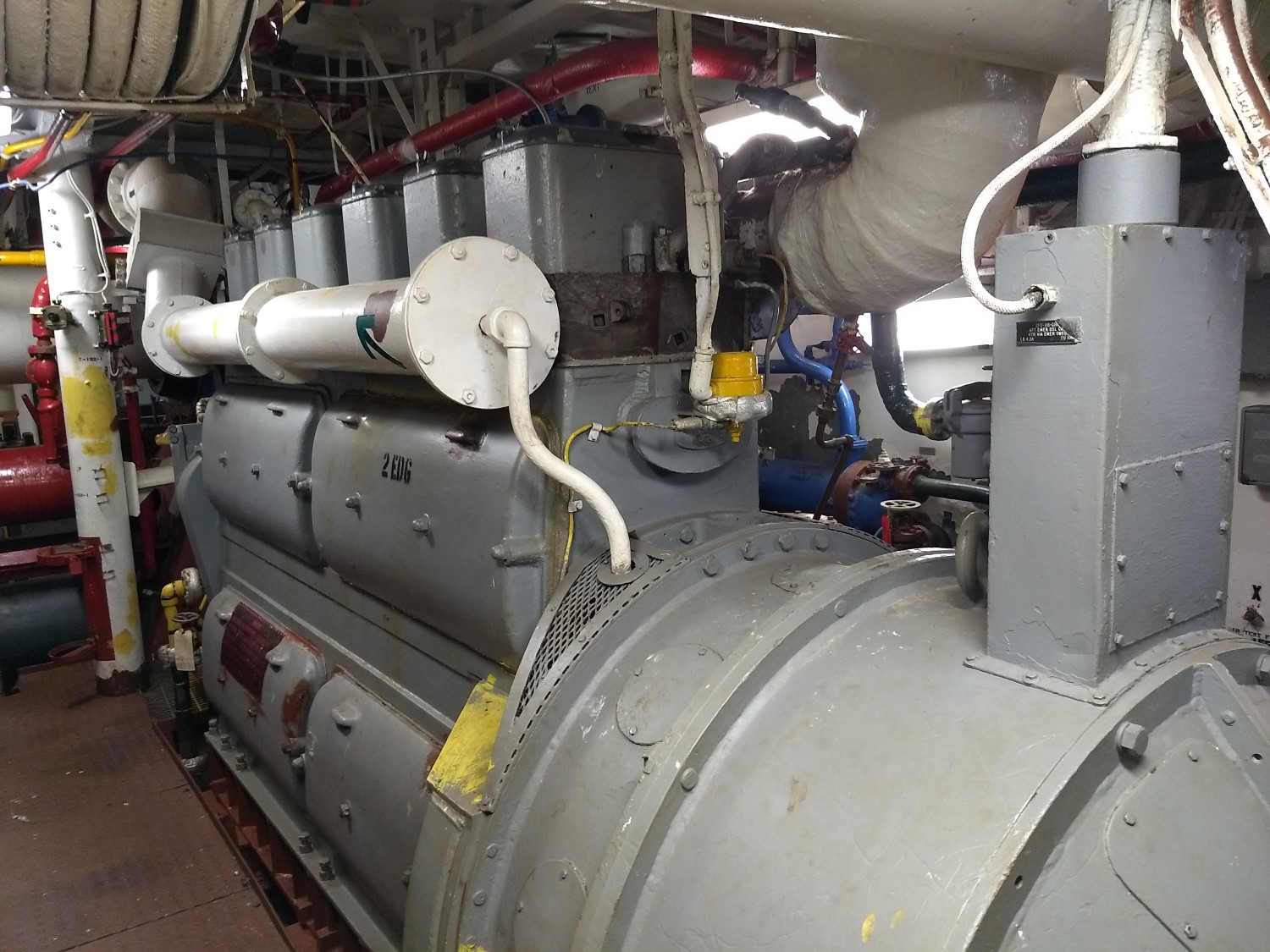
Comments
That must have been loud to work in while the ship was underway. I wonder how the intake and exhaust for the generator runs.
Is there an obvious reason for that stairwell? Were they just cramming things in any way they could around other stuff? Looks like it'd make getting any machinery in and out impossible.
Guess this was a good place for an emergency generator if you were worried about shell damage. Possibly less so if you were worried about torpedos or flooding from shaft damage?
I think standard naval design safety practice is to never let you walk one place below the water-line to another with coming above it. That sort of necessitates lots of tiny narrow stair-wells.
That hatch is actually designed for machinery access. Remove the ladders, and you have a nice square hole you can winch stuff through. But as ike says, yes, you can't move between compartments below broadway (where that photo was taken). Not sure about the diesel exhaust. I'd guess it's up the aft stack.
The vertical ladder on the right side, that can't be used unless the angled ladders are removed, kinda gave away that the angled ones are removable. (One of those trivial facts that stuck in my head, that there are no stairs aboard ship, only ladders)
In the last photo, that sure looks like a fire main hooked up to a fuel line. What's that all about?
I'm not actually sure. The color codes are a bit murky, although I think it's more likely that the yellow is a preservative of some sort, and not a color code. I wasn't thinking when I labeled the picture.
@Alsadius
It's for when the fire department goes Fahrenheit 451!